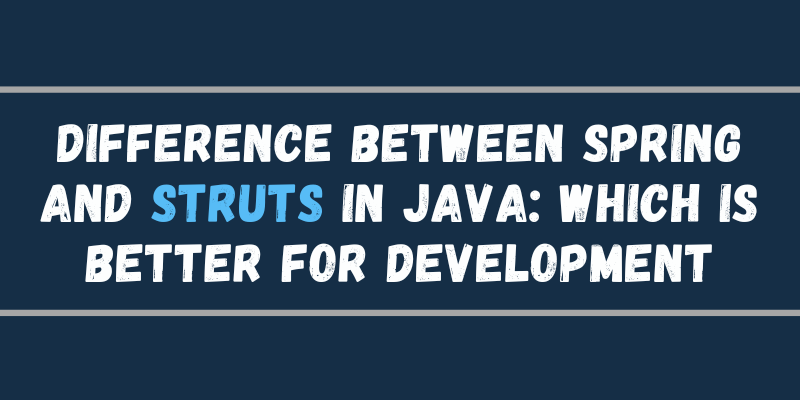Java is one of the popular programming languages in the world, with 33.27% of developers worldwide using it. Unsurprisingly, this technology has so many frameworks and updates to work with because each software engineer tries to contribute to the platform. Join FITA Academy‘s Struts Training Institutes in Chennai. It offers advanced certification training and 100% job placement assistance. However, the variety of technologies makes deciding which one to use difficult. That is why we have prepared a detailed comparison of the Struts and Spring frameworks. We’ll go over the Difference Between Spring and Struts in Java: Which is Better for Development with its features and key differences. Continue reading to learn more!
What is Struts?
Apache Struts is a Java framework that is free and open source. It adheres to the MVC architectural pattern and provides developers with pre-built classes to use or customise depending on their projects. The technology is most commonly used to create web applications.
By providing pre-defined functionality, the Struts framework simplifies the development and maintenance of web applications. It is also known for making code extension, debugging, and comprehension easier.
Features
Let’s look at the features of this technology to see how they differ from Struts and the Spring MVC framework:
POJO forms and actions
To receive form inputs or monitor the action class, the framework allows using any Plain Old Java Object. This improves your code’s readability and reusability, lowering maintenance and update costs.
Tag support
Struts uses a tag library to create various types of functionality, such as data entry, URLs, property statements, etc. A basic understanding of XML, HTML, and CSS is required. This eliminates the need for developers to waste time learning new concepts.
Advantage
Some of the advantages of using Struts include the following:
Supported integrations: Developers can easily integrate other frameworks and technologies into their software to add more features.
High testability: Struts do not require complex structures like HttpServletResponse or HttpServletRequest, which simplifies and reduces the cost of unit tests.
Simplified ActionForms: Struts uses POJOs, which do not require class extensions or interface implementation. This cuts down on development time.
Enroll in Struts course in Chennai, Which will help you understand more Concepts about the applications of Struts.
What is Spring?
Spring is a Java framework that is free and open source. It adds dependency injection (DI) and Inversion of Control (IoC), two concepts missing from the original specification. The technology is mainly used to make web application development easier.
Features
To compare Struts and Spring, we must first examine the latter’s key characteristics:
IoC Container
The core element of this framework simplifies the configuration and management of Java objects. It makes use of dependency injection to provide an object reference during runtime. As a result, testing and maintenance costs were reduced.
Data Access Framework
This feature allows developers to store persistence data using JDBC and Hibernate. It handles common problems such as interacting with a database connection, handling exceptions, and utilising transaction management.
Advantages
Some of Spring’s leading advantages include:
Lightweight: This feature allows developers to store persistence data using JDBC and Hibernate. It handles common problems such as interacting with a database connection, handling exceptions, and utilising transaction management.
Configuration consistency: Developers can use XML or Java-based annotations as they see fit. This allows them to keep the software consistent and avoid total disaster. As a result, you get clean code that can be reused throughout your project.
Server requirements: The framework does not require a web or application server. All components are managed using dependency injection, which eliminates the need for additional costs.
5 Differences between Java Spring and Struts
The difference between Struts and Spring is quite noticeable when comparing the two frameworks. While they are similar in many ways to most popular technologies, the following are the key differences to remember:
Peculiarities: Struts extends servlet APIs, whereas Spring integrates DI and IOC.
Architecture: Struts do not adhere to the layered architectural pattern, whereas Spring does.
Framework: Struts are heavy due to their tight coupling, whereas Spring are light.
Integration: Struts requires manual coding, whereas Spring supports ORM and JDBC technologies.
Flexibility: Struts is less flexible than Spring, which has modules and other products.
Conclusion
In this blog, we have discussed the Difference Between Spring and Struts in Java: Which is Better for Development. Now that we’ve compared Java Struts vs Spring framework, we can see that both options are distinct and offer distinct functionalities. While Spring emphasises dependency injection and inversion of control, Struts adheres to the MVC architectural pattern and provides developers with pre-built classes. To learn more about such concepts and become a programming language expert, you can enrol in Struts Training in Chennai, which provides the best Struts Certification Training with Placement Support.
